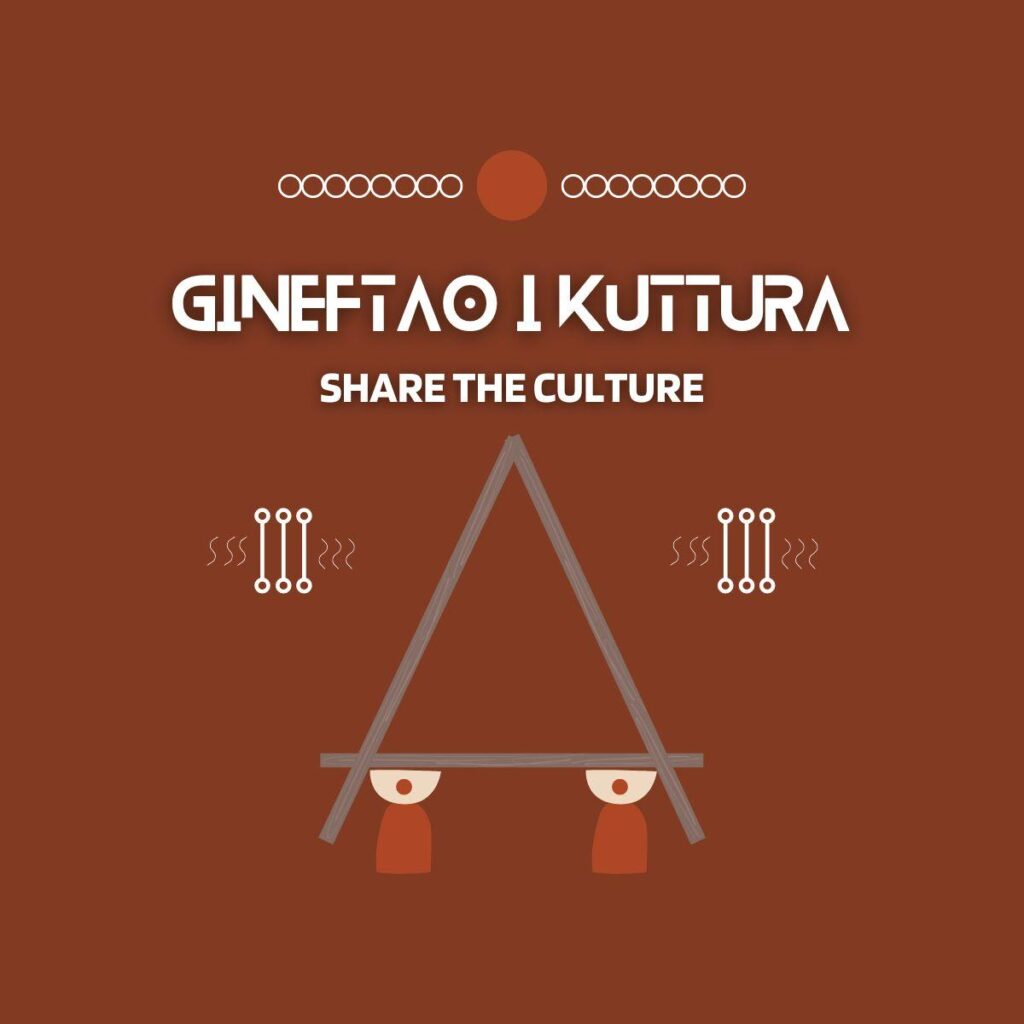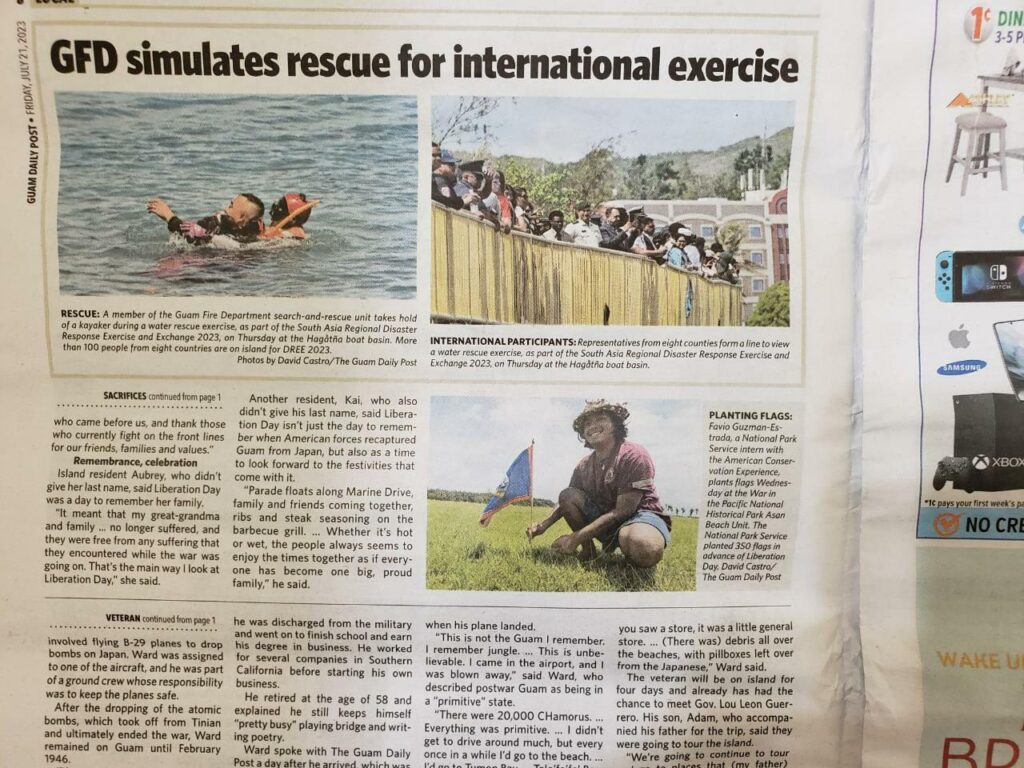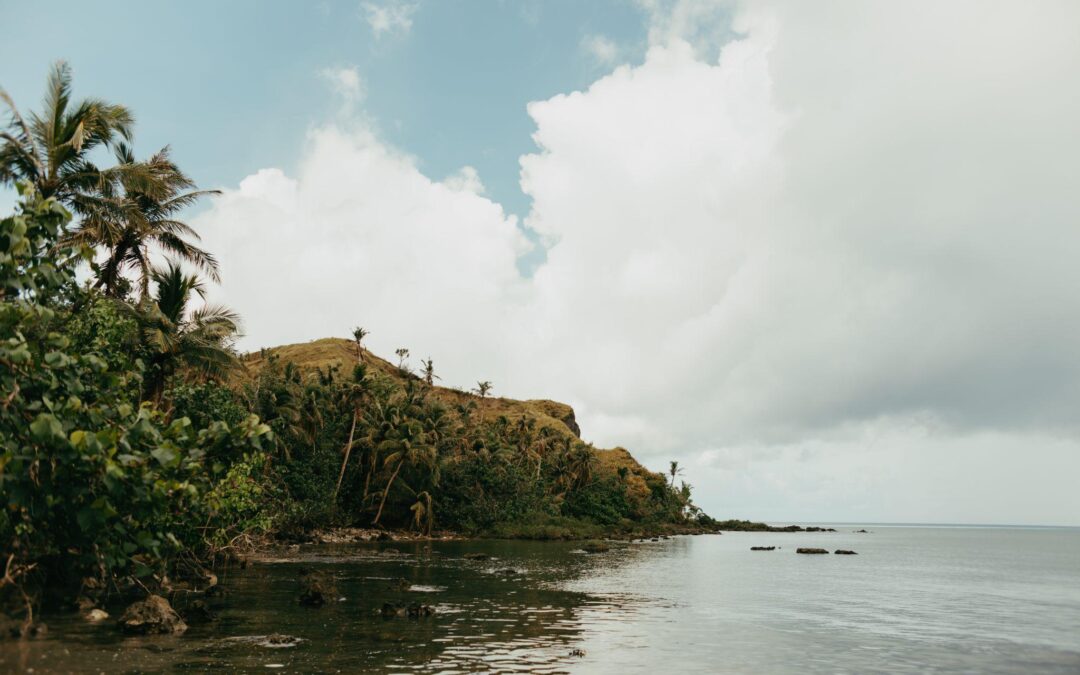Children of The Diaspora Longing for Home
Written By: Favio Guzman-Estrada
If I were to describe myself to someone, I would say that I am an Indigenous Queer CHamoru and Mexican born and raised in the diaspora. I would also say that I’m an artist and through art, I seek to continue to add to the stories and history of my ancestors and family who are artists. To innovate and continue to preserve history and culture. I also have a deep curiosity and longing to know more about culture, environment, people, history, etc. When I came across the, The Gineftao I Kuttura “Share The Culture ” internship in which ACE partnered with the War in the Pacific National Historical Park, located on Guam, I instantly gravitated to this internship opportunity. Prior to accepting this internship, I’ve only been to Guam once when I was 14 and so for me, accepting this internship was a big deal. One, because I have this deep desire and connection to the land and culture. Second, I knew this internship would provide opportunities to create and third, this internship would provide an amazing opportunity to learn.

Purpose, Goals, and Objective: “The purpose of this internship is to implement the importance of reviving, uplifting and innovating CHamoru Culture through purposeful learning, workshops, community, etc. This internship is to provide space for cultivating a community for gaining CHamoru knowledge for organized workshops in which the Gineftao i Kuttura intern chooses to organize. Whether the Gineftao i Kuttura intern chooses to focus on weaving, language, dance, chant, pottery, etc They have the autonomy to expand their knowledge on a certain interest through contacting other organizations and or people to execute a well organized workshop. It is the responsibility of the Gineftao i Kuttura intern to really invest in community building behind the scenes and as well organizing workshop events to bring people to learn about CHamoru culture. This intern will allow room and support to plan, innovate, seek, and prepare for a successful term.”
Throughout my term, I’ve gotten the opportunity to explore culture and the environment in ways that I wasn’t expecting through this internship. For example, one of my first experiences working outdoors was relocating over 400+ endemic tree snails with the US Fish and Wildlife Team in Ritidian or Litekyan in the CHamoru language , Guam’s National Wildlife Refuge. Just three weeks prior to starting my internship on Guam, Guam experienced one of the strongest and most impactful storms in May, 2023. Typhoon Mawar destroyed many vegetation and life around the island, especially in the Northern parts of Guam. Ritidian was one of the locations in which Typhoon Mawar impacted the most. I think, for me, getting the opportunity to go up to Ritidian, especially being that it’s been closed to the public due to the typhoon, was a complete honor and privilege and as well contributing to rebuilding Guam was something I wanted to accomplish throughout my term. The relocation process was quite a challenge to say the least. Because there was so much debris, a lot of the paths finding the tree snails were unclear and so therefore I came across lots of fallen branches, trees, etc. The relocation took about 6 hours of going out to find the tree snails on debris to relocate them to a safer environment. Saving the tree snails was crucial post Mawar, because the tree snails are the only endemic species on Guam and so it was important to ensure the safety of them and the environment.

Saving Endemic Tree Snails
With the aftermath of Typhoon Mawar, many communities endured many losses and emotional damage, and so there comes a lot of trauma and uncertainty for families and individuals impacted by great measures. Before starting my term, I made it important to include any opportunity to help out in the community. One example of community engagement was getting to help clean up at Asan Beach Park, one of the NPS locations on Guam. I first started with trail cleanup with NPS Park rangers, staff and volunteer community members back in June. Asan Beach park and some of its sites experienced really bad damage from Mawar and for me it was an opportunity through the community to learn about the significance of Asan Beach Park and how the park offers an important site to learn about WWII history and that communities enjoy the park for gathering and other useful purposes. I was able to learn about different species and plant life that reside in the park which allowed me the opportunity to connect with the environment while contributing to cleaning up in order for the vegetation to grow and heal. As a Diaspora CHamoru who didn’t experience Mawar but only the aftermath of having no power for a couple of weeks, I wanted to help in any way that I could since coming to Guam and contribute to community and environment healing. I also was able to help the NPS staff display Guam and U.S. flags to honor the lives that were taken during the WWII, Japanese occupation from 19441-1944.


Asan Beach Park Trail Clean up & Flag Display
To participate in such a monumental display, understanding that many visitors came to pay their respects and mourn during Liberation Day/weekend, Guam’s largest celebration and an annual commemoration day of the invasion by the U.S. military forces on July 21, 1944. My experience so far at Asan Beach Park offered a meaningful experience so far in regards to cultivating community through connecting with the land and community in which I found very healing in many ways. I saw the impacts in which community and healing after Typhoon Mawar was made apparent. Overall I truly valued the importance of community and seeing the community come together to clean up and hold space to process and grieve from Typhoon Mawar and I was happy to have witnessed and been a part of.

